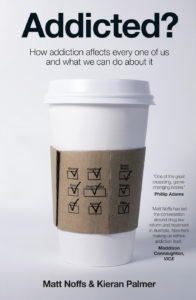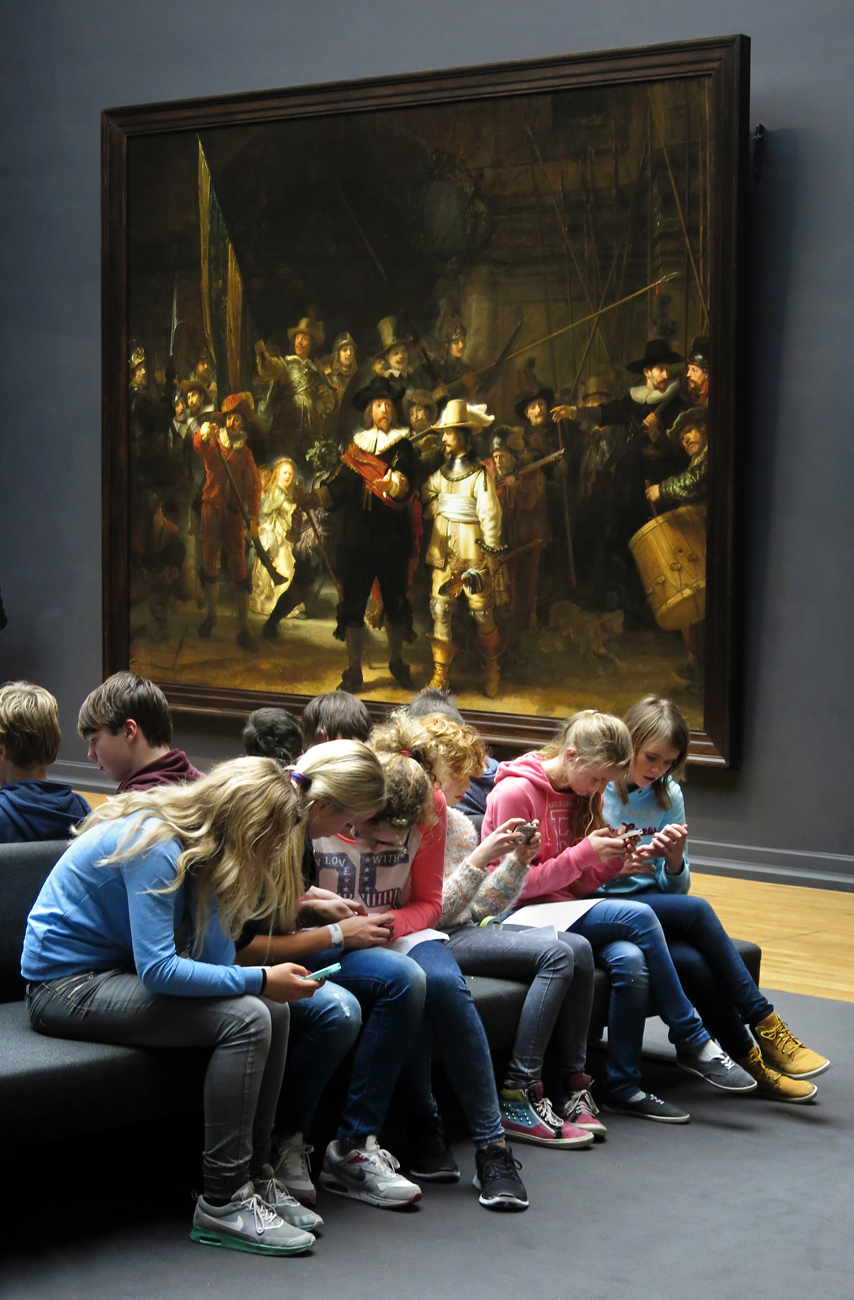2017. Sydney. Every inner-city street is congested with traffic. A mother is driving her daughters to school. She is feeling claustrophobic in the chaos of the early-morning commute. The kids are yelling at each other. She turns the radio up louder to drown out the noise.
She looks up at a billboard and sees a telecommunications ad. It features a picture of two children in the back seat of a car just like hers. Happy. Content. They both hold smartphones. Written across the poster in big bold letters is: ‘Scream time? Screen time!’
Addicted to Smartphones?
The way we give our kids smartphones and tablets to shut them up is not so different from the days when we freely gave children laudanum to keep them subdued.
Are smartphones something that we can become addicted to, in a clinical sense? Could they ever be as destructive to our mental health as heroin or ice addiction?
According to researchers writing for Computers in Human Behaviour: “Despite the advancements of smartphones, their detrimental effects are becoming ever more apparent. The related addiction phenomena and side effects have become significant social problems. Smartphone addictions present with direct symptoms of psychological anxiety, communication avoidance, weakening of social adaptations, and withdrawal symptoms that are similar to those of drug or alcohol addiction.”
Their study showed that even children under two can become addicted. But surely while it’s saddening to think that our children are becoming smartphone addicts, it can’t hurt them in the same way ice can. Can it?
The problems go way beyond smartphones. A significant amount of research has been done into the impact of all social-media technology in our lives, particularly those of younger people. Among the more common issues are associations between prolonged use of social media and anxiety. Another study shows links between social media and depression.
Many of us have recognised at some stage that our devices steal our time in certain ways. We feel anxious when we don’t have our phones on us. Then we feel repulsed when we realise hours have drifted by and all we’ve done is stare into them.
A recent study found that even having your smartphone face-down on a table while holding a conversation can have a negative impact.
Another study presents evidence suggesting that smartphones and sleep disturbance can lead to depression. Yet another shows that withdrawal from smartphones can result in depression, anxiety, insomnia, hyperactivity and other behavioural issues. In one study, researchers analysed smartphone use in terms of the eight DSM- 5 criteria for a gambling disorder.
This newfound addiction is affecting us and our relationships in ways we could never have imagined.
But it is our children we should be most concerned about. Perhaps we should tell them to ‘Just Say No’ to smartphones? Regulation is the word here. Some of the studies of smartphone addiction show that parents can take control of their children’s use and manage the potential problems that arise.
How? Certainly not by simply throwing the phones away. Or giving them lectures. Instead, parents need to be exemplars themselves.
Fraying at the Edges
2017. Sydney. I am in Centennial Park. I’ve left work tired and frustrated. The job of CEO of the Ted Noffs Foundation can sometimes take its toll on my family and me. I’ve just heard that the Premier of New South Wales has refused to support pill testing, a vital Harm Reduction strategy that would have saved young lives at music festivals.
A lot had been riding on this moment. It’s cost me years of struggle. And now the struggle must continue.
I drive around the park. My hands gripping and twisting the steering wheel. My anger swelling inside me. I feel like yelling. But what would be the point? My anger is like an internal tidal wave. A washing machine. Churning. Going nowhere.
I pull over by the bicycle track. Kids are playing. Two mothers are discussing yoga. Should I give up? The group I helped assemble to make pill testing happen is fraying at the edges. We know there will be more deaths unless our State and Territory governments find the courage they need. Unless we can all work together.
My anger slowly subsides. And soon enough transforms into a dull boredom. I grab my phone. My fingertip touches the screen lightly, then its impression fades away like a mist.
I get out of the car and walk. My body slouched. My neck craned. My smartphone cradled in my left hand and my right index finger poking at its illuminated screen. The sun goes down behind me. The sky – an Yves Klein blue – melts into pastel orange. The cicadas begin rhythmically chanting. But I have my back to the sky and my head in a grotto of light, amidst the darkening trees.
What am I doing? I’m distracted. Checking email, that’s it. No, nothing there … Oh, hold on, ‘Last update 4.15pm’ – I’ll refresh.
I look up. Someone is walking towards me but I’m blinded by the twilight. I go back to my email. A new message! A moment of anticipation holds my heart in its grip. The subject line says: ‘Hey!’
Excellent! It will be good news! Perhaps a breakthrough with the pill testing? Maybe other good news from work? Perhaps a friend? My finger presses the screen again, and the pixels are squashed against everything else. The light changes, a larger screen opens up and I see the message. The email opens. Spam. I feel cheated on.
Another figure walks past the other way. My eyes strain as they go from darkness to light. I notice the time. It’s the kids’ bedtime in half an hour!
OK. I’ve got to get home. But before I go, I just need to check Twitter. Make sure I haven’t missed anything. I think I have time … Another window opens. Another minute becomes another hour. Time isn’t even near me. I’m protected from it, here in the cocoon of LCD light. I am not time; I belong to eternity. Everything else can wait outside of this sacred space. This moment is sacred – isn’t it? My wife calls to ask where I am. The kids are already asleep.
I recently had coffee with a journalist who told me that she too had decided that she was spending too much time on her phone. She had found some research that suggested turning off the phone’s colours could reduce its addictive properties and she helped me do the same on mine. Since that meeting my phone has been black and white and it has indeed reduced my desire to pick it up as often. Simple tactics like this might not halt the challenges we’ll face in the future with our growing addiction to technology but it may help you in a small way.
You may be left wondering if smartphones are more hazardous to our mental health than ice. After all, there are far more smartphone users out there than ice users. What would happen if all of us called on the government to put as much effort into regulating smartphones and social media as they do into ‘Ice destroys lives’ ads?
This is an edited extract from Addicted – How addiction affects every one of us and what we can do about it by Matt Noffs and Kieran Palmer, Harper Collins, Paperback, $32.99. Research and studies mentioned here are elaborated on, footnoted and referenced at length in the book.

Addicted? by Matt Noffs and Kieran Palmer.






